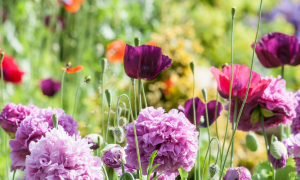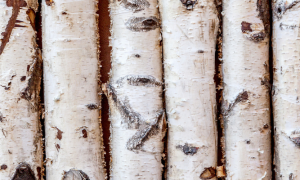Guest post by Olive Dawson.
As the weather begins to cool, you may notice that your tomato plants are looking a droopy, or that your green beans are no longer producing the way they used to. While the first frost spells disaster for some garden crops, there are dozens of other delicious, nutritious vegetables and fruits that you can grow during the autumn months. One gardening rule of thumb is to clearly know when to grow what–here are five of the best types of crops to harvest in your garden during the fall season.
1. Leafy Greens
Fall is a great time to cultivate fast-growing leafy greens. Cabbage, kale, spinach, and chard all grow well in the fall. Plus, if you harvest the leaves of these plants as soon as they emerge, they will continue to produce and will taste even better.
These greens can be grown until the first frost, with some types, such as kale, actually tasting better once they’ve succumbed to the cold. Look for heirloom varieties that are designed for fall planting for best results.
2. Brassicas
Broccoli, cauliflower, cabbage, radishes, and mustard are all in the brassica category and thrive in cold fall temperatures. Plant these crops in a different location every year to help keep pests and diseases at bay, but keep in mind that you can grow multiple batches of these plants. Plant in early spring for slow harvest throughout the summer months, and then replenish in the late summer for a fall harvest. Many people continue to grow brassica crops throughout the winter, using a cold frame or row covers to keep the leaves of the plants protected.
3. Root Vegetables
Beets, carrots, turnips, radishes–what do all of these have in common? They grow well out of sight until the fall, when it’s time to harvest. While these crops can be planted in the spring and harvested during the summer months, fall varieties should be planted at the end of summer and can grow into November or December.
Consider growing alternative varieties or rotations of these crops for the best yield. Purple, white, or yellow carrots are often more adapted to cold weather than their more common orange counterparts. Turnips make a great cover crop and forage species for wildlife, so consider all of these factors when planning out your fall growing season.
4. Nut Trees
Fall is the perfect time to harvest nuts from trees like pecans, hazelnuts, and walnuts, and it’s also the best time to plant these species, too. Nut trees are typically grown as bare-root transplants, meaning they started as seedlings for the first couple years and were transplanted to a new location with the same climate. The tree is dormant in November or December, making the roots more dense when adapting to new soil.
It’s best to harvest tree nuts early in the fall before they drop to the ground and begin to rot on the soil or are eaten by wildlife.
5. Seasonal Fruits
Most people know that, if you live in the north, you can grow apples well into the fall. In fact, apples should be harvested this time of the year. Other fruits, like pomegranates and citrus fruit, produce ripe fruit by mid-winter, but can be harvested early.
When you are organizing a fall planting, remember that timing is everything. Pay attention to your area’s specific hardiness zone and growing season, and plant about ten weeks before the first killing frost. While this can be nearly impossible to predict, late summer is usually a good time to think about planting. Also, consider planting insect repelling herbs in your garden to make sure you don’t lose your harvest to pests.
With a little bit of forward thinking and a willingness to brave the colder temperatures to harvest crops and tend to weeds, you can enjoy a bountiful harvest even after all of your other plants have completely died back.
Olive Dawson is a gardening and landscape design writer and environmentalist. She is always searching for new ways to reduce waste and grow food organically. She is most proud of her homemade beauty products.






